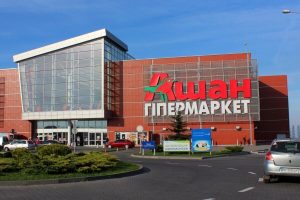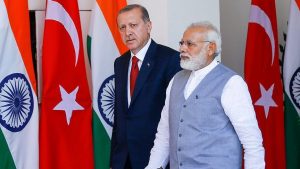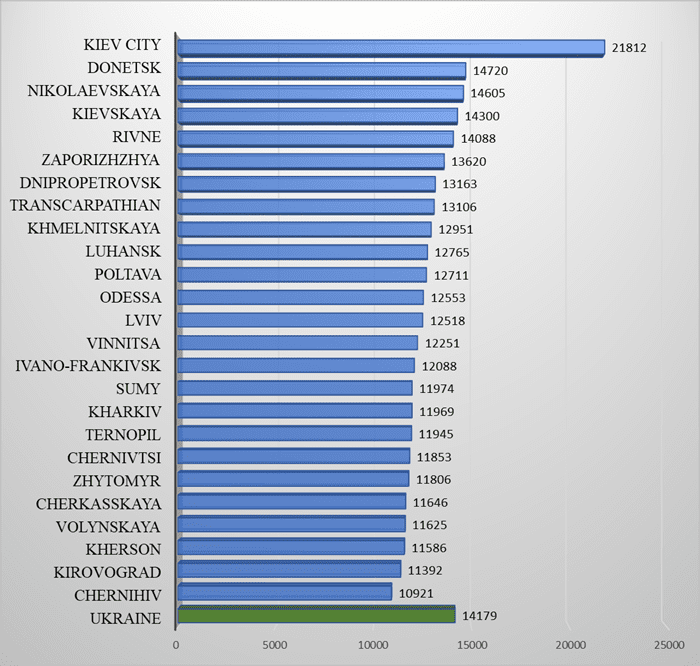
The Latvian pharmaceutical concern Olainfarm has expanded its marketing team and set up fully operating representative office in Ukraine, the company said in a press release posted on the GlobeNewswire website.
According to the press release, 25 Olainfarm employees will provide a full-fledged presence in 14 cities of Ukraine, in particular, Kyiv, Dnipro, Kharkiv, Odesa and Lviv.
The capacity expansion helped to raise the company’s local impact by reaching 63,000 healthcare professionals and about 100,000 digital contacts in a 2020 campaign, executed in the second part of the year. The project contributed to the adoption of a positive decision to expand the company’s presence in Ukraine.
Olainfarm, a part of Olainfarm Group, is one of the leading pharmaceutical companies in the Baltic States offering high quality medicine and chemical pharmaceutical products. Its product portfolio includes over 60 finished dosage forms, 25 active pharmaceutical ingredients and over 20 intermediates.
Subsidiaries are located in Ukraine, Lithuania, Turkey and Kyrgyzstan, and representative offices – in the Russian Federation, Belarus, Tajikistan, Albania, Mongolia, and Uzbekistan.

Auchan Retail Ukraine expects to reclaim ownership of the land plot in Odesa, however, in the event of a negative result in the Ukrainian courts, the company will consider applying to international arbitration, since the price set by the Asset Recovery and Management Agency (ARMA) for this site is not fair and market-oriented, Head of Legal and Compliance of Auchan Retail Ukraine Ruslan Dubas told Interfax-Ukraine.
“On February 16, the first session of the Grand Chamber of the Supreme Court took place. We hope that the court will ultimately uphold the decision of the Pivnichny [Northern] Economic Court of Appeals and will defend property rights. Namely, it will confirm the invalidity of the results of electronic auctions, which alienated the land plot at a deliberately low price,” he said.
The companies Auchan Retail Ukraine and Ceetrus Ukraine, part of the Auchan holding, defend in the courts the rights to land plots in the village of Lymanka (formerly the village of Mizikevycha, Ovidiopolsky district, Odesa region) with a total area of about 27 hectares, previously seized as material evidence and sold at an auction at a reduced price.
“We cannot now assess the damage that the company experienced by the raiding. But the state of Ukraine has already suffered losses: at least UAH 1.6 million of court fees, which were collected by the executive service from ARMA, but in fact from the state budget,” Dubas said.
As reported, the Prymorsky District Court of Odesa in April 2019 seized land plots with a total area of about 27 hectares and transferred them to the management of ARMA. Subsequently, according to a court decision in the Unified State Register of Court Decisions, ARMA sold the plots transferred to its management at an auction at a reduced price for UAH 8.765 million.
Ceetrus Ukraine LLC (before June 2018 – Immoshan Ukraine) is an international developer of shopping centers and retail parks in the country.
Auchan Retail is an international retail company. Its first store was opened in France in 1961.
Auchan Retail Ukraine has been operating in Ukraine since 2008

India may soon make a big economic leap and Ukraine should develop relations with it more, Kost Bondarenko, the head of the Ukrainian Policy Foundation, political scientist and historian, has said.
“India, as a future superstate, which within the next ten years could make a very serious economic leap – and it already demonstrates a large number of points that can form the basis of its development – should also be of interest to Ukraine,” Bondarenko said at a press conference entitled “Eastern Vector of Ukrainian Diplomacy” at the Interfax-Ukraine agency.
In turn, international political scientist Anton Kuchukhidze pointed out that Turkey is a promising direction for Ukraine.
“I think that Turkey can become for Ukraine not only a good trade partner in terms of trade, which is not fully formed and its potential is not fully used. Turkey is considered the largest hub in Asia not only for Asia, but also for Africa. Taking into account the level of bilateral cooperation of Turkey both in Asia and in Africa, I think that this could be a good bridge for Ukraine, for building economic ties with African states,” he explained.
The expert also stressed the need to create a number of forums, such as “Ukraine-Central Asia,” “Ukraine-Asian-Pacific Region,” “Ukraine-Islamic World.”
“Through such stable forums for dialogue, it would be possible to advance the economic agenda,” Kuchukhidze added.
At the same time, Bondarenko noted that both the Foreign Ministry of Ukraine and the President’s Office have an understanding of the need to establish bilateral or multilateral relations between Ukraine and Asian states.
“The last visit of the president of Ukraine to the United Arab Emirates gave rise to a discussion on where and what the interests of Ukraine in this region are. But this region is not limited to only the United Arab Emirates,” he said.
Bondarenko stressed that for 30 years in Ukraine there has been an imbalance towards relations with the West.
“I think that Zelensky’s visit to the UAE and the fact that a big eastern trip is now expected (at least, a trip to the countries of the East has been announced) can break the situation of imbalance that we have observed over the past years, and possibly decades,” he said.
In addition, the expert drew attention to the need to revise the false, in his opinion, policy of delimiting the activities of Ukrainian diplomatic missions and trade and economic missions, which each work in isolation from each other and are subordinate to different ministries.
Average monthly wage by region in dec 2020, UAH.


In 2020, the State Service of Ukraine for Food Safety and Consumer Protection received more than 20,900 proposals, appeals, complaints and statements from consumers.
“The largest number (41.5%) of consumers complained about the quality of non-food products. Also, a large number of complaints (29.5%) related to the quality of housing and communal services. 5.1% of consumers were dissatisfied with the quality of food products,” the message says.
As reported, in 2020, the State Service of Ukraine for Food Safety and Consumer Protection checked the safety of goods, the provision of services (works) in the amount of more than UAH 72.8 million, the purchase and use by the population of low-quality food, non-food goods and services (works) in the amount of more than UAH 35.6 million (48.9%). Consumers were returned UAH 10.2 million for low-quality goods and services.
“Everyone has a right to receive high-quality and safe goods and services,” head of the State Consumer Service Vladyslava Mahaletska says. “We are already working on simplifying the procedure of consumers’ rights protection. This is, first of all, about effective communication in digital,” the department said.

Chornomorsk seaport (Odesa region) in January 2021 reduced handling of goods by 38.3% compared to January 2020, to 1.424 million tonnes.
According to the information on the website of the Ukrainian Sea Ports Authority, during the specified period, Chornomorsk seaport reduced handling of export cargo by 37.3%, to 1.197 million tonnes, import cargo by 43.3%, to 178,870 tonnes, and transit cargo by 38, to 48,830 tonnes. At the same time, coastal cargo was not handled.
Handling of bulk cargo in the port decreased by 16.8%, to 90,860 tonnes, dry bulk cargo by 44.9%, to 910,480 tonnes, and packaged goods by 22.8%, to 423,460 tonnes.
Handling of containers amounted to 13,267 TEU (an increase of 1.9%) in January 2021.
As reported, Chornomorsk seaport in 2020 reduced cargo handling by 8.7% compared to 2019, to 23.887 million tonnes.
Chornomorsk seaport is a universal international port, one of the largest on the Black Sea. The enterprise has specialized terminals and complexes that allow handling a wide range of cargo: liquid, bulk, general. The seaport’s 29 berths are capable of receiving vessels with a carrying capacity of up to 100,000 tonnes. The port’s annual designed capacity is over 30 million tonnes.
CARGO, CARGO HANDLING, CHORNOMORSK, CHORNOMORSK PORT, CHORNOMORSK SEAPORT